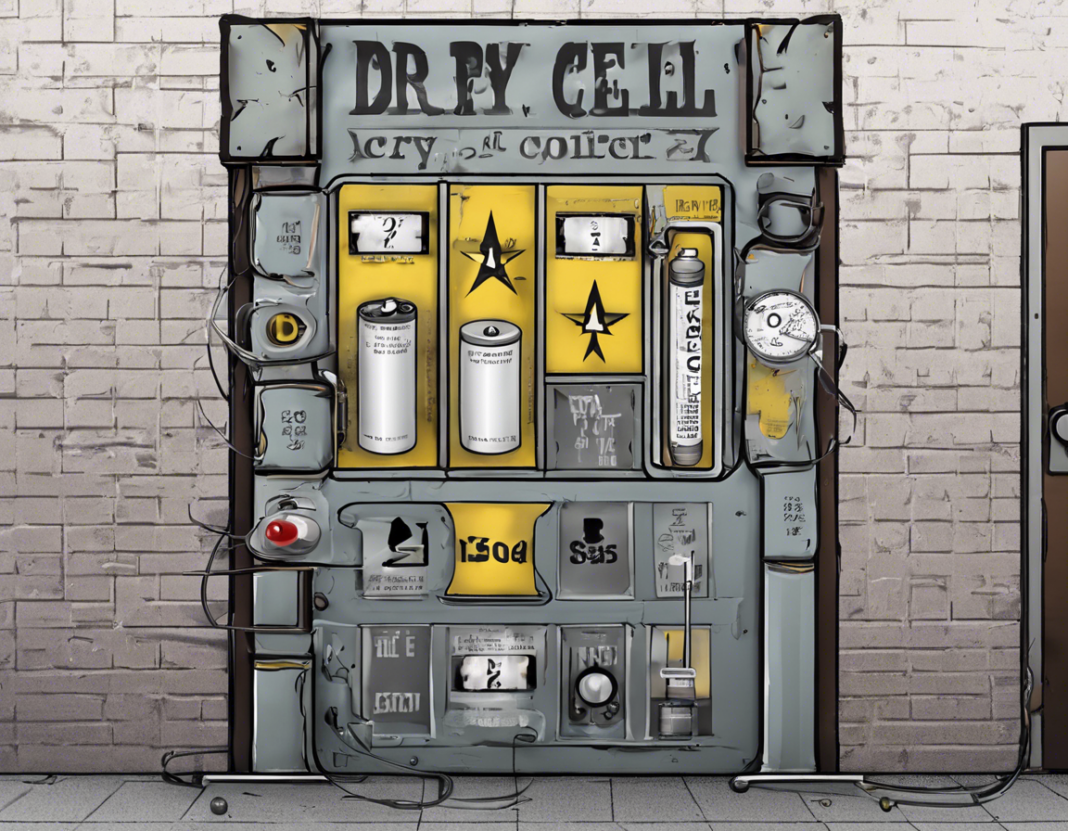Introduction
Dry cell batteries have become an integral part of our daily lives, powering everything from TV remotes to portable gadgets. Despite their common usage, many people are unaware of how these tiny powerhouses work and the science behind them. In this comprehensive guide, we will delve into the magic of dry cell batteries, explaining their inner workings, different types, uses, benefits, and much more.
What is a Dry Cell Battery?
A dry cell battery is a type of electrical battery that contains little to no free liquid electrolyte. Unlike traditional wet cell batteries, dry cell batteries are sealed, making them more portable, safer, and versatile for a wide range of applications. The term "dry cell" comes from the fact that these batteries do not contain liquid electrolytes, which can spill or leak.
How Does a Dry Cell Battery Work?
At the heart of every dry cell battery is an electrochemical reaction that generates electrical energy. The key components of a typical dry cell battery include:
- Cathode: The positive electrode where reduction (gain of electrons) occurs.
- Anode: The negative electrode where oxidation (loss of electrons) occurs.
- Electrolyte: A medium that allows the flow of ions between the cathode and anode, completing the circuit.
- Separator: Prevents the cathode and anode from coming into direct contact, while still allowing ion flow.
When a dry cell battery is connected to a circuit, a chemical reaction takes place within the battery, causing electrons to flow from the anode to the cathode through the external circuit. This flow of electrons creates an electric current that powers the connected device.
Types of Dry Cell Batteries
There are several types of dry cell batteries, each designed for specific applications based on factors like energy density, voltage, size, and discharge characteristics. Some common types of dry cell batteries include:
-
Alkaline Batteries: These are the most widely used dry cell batteries known for their long shelf life and high energy density. Alkaline batteries are ideal for low to moderate drain devices like remote controls, flashlights, and clocks.
-
Lithium Batteries: Lithium batteries offer higher voltage and energy density compared to alkaline batteries. They are commonly used in devices that require high performance and long-lasting power, such as digital cameras, laptops, and electric vehicles.
-
Zinc-Carbon Batteries: These are the most basic type of dry cell batteries and are often used in devices with low power requirements, such as wall clocks, toys, and radios.
-
Nickel-Metal Hydride (NiMH) Batteries: NiMH batteries are rechargeable dry cell batteries known for their eco-friendliness and ability to hold a charge for an extended period. They are commonly used in power tools, cameras, and medical devices.
Advantages of Dry Cell Batteries
Dry cell batteries offer several advantages over traditional wet cell batteries, making them the preferred choice for many applications. Some key benefits include:
- Portability: The sealed design of dry cell batteries makes them highly portable and convenient for use in various devices.
- Safety: Unlike wet cell batteries that contain liquid electrolytes, dry cell batteries are safer and less prone to leaks or spills.
- Long Shelf Life: Dry cell batteries have a longer shelf life compared to wet cell batteries, making them ideal for stocking up or emergency use.
- Versatility: With a wide range of types and sizes available, dry cell batteries can power everything from small electronic devices to large appliances.
- Low Maintenance: Dry cell batteries require minimal maintenance and can be easily replaced when depleted.
Applications of Dry Cell Batteries
Dry cell batteries are used in a myriad of devices across various industries. Some common applications include:
- Consumer Electronics: From smartphones to remote controls, dry cell batteries power a wide range of consumer devices.
- Automotive: Dry cell batteries are used in vehicles for starting, lighting, and ignition systems.
- Medical Devices: Many medical devices, such as hearing aids and portable monitors, rely on dry cell batteries for power.
- Industrial: Dry cell batteries are essential for powering tools, equipment, and emergency lighting in industrial settings.
- Renewable Energy: In off-grid solar systems and backup power solutions, dry cell batteries store energy for later use.
Disposal and Recycling of Dry Cell Batteries
Proper disposal and recycling of dry cell batteries are essential to minimize environmental impact. Due to the chemicals and metals used in dry cell batteries, improper disposal can lead to soil and water contamination. Here are some tips for disposing of dry cell batteries responsibly:
- Recycling Centers: Many cities have designated recycling centers that accept dry cell batteries for proper recycling.
- Retailer Programs: Some retailers offer battery recycling programs where you can drop off used batteries for recycling.
- Hazardous Waste Facilities: Check with local hazardous waste facilities for guidelines on disposing of dry cell batteries safely.
By recycling dry cell batteries, valuable materials like zinc, manganese, and steel can be recovered and reused in the production of new batteries, reducing the need for raw materials and minimizing waste.
Frequently Asked Questions (FAQs)
- Can dry cell batteries be recharged?
-
Some types of dry cell batteries, such as nickel-metal hydride (NiMH) batteries, are rechargeable. However, traditional alkaline and zinc-carbon dry cell batteries are not designed to be recharged and should be disposed of properly after use.
-
How long do dry cell batteries last?
-
The lifespan of a dry cell battery depends on factors like usage, quality, and storage conditions. Alkaline batteries typically last 2-7 years, while lithium batteries can last up to 10 years or more.
-
Are dry cell batteries safe to use in all devices?
-
Dry cell batteries are safe for use in most devices that require portable power. However, it is essential to use the correct battery type and size recommended by the device manufacturer to avoid potential safety hazards.
-
What happens if a dry cell battery is exposed to heat or cold?
-
Extreme temperatures can affect the performance of dry cell batteries. High heat can cause batteries to leak or even explode, while cold temperatures can reduce their efficiency. It is best to store and use dry cell batteries within the recommended temperature range.
-
Can I mix different types of dry cell batteries in a device?
- It is not recommended to mix different types or brands of dry cell batteries in a single device. Mixing batteries with different chemistries or capacities can lead to uneven discharge, reduced performance, and potential damage to the device.
In conclusion, dry cell batteries play a crucial role in powering our modern world, offering convenience, reliability, and versatility for a wide range of applications. By understanding how these batteries work, the different types available, their benefits, and proper disposal methods, we can make informed choices to maximize their efficiency and minimize environmental impact.

